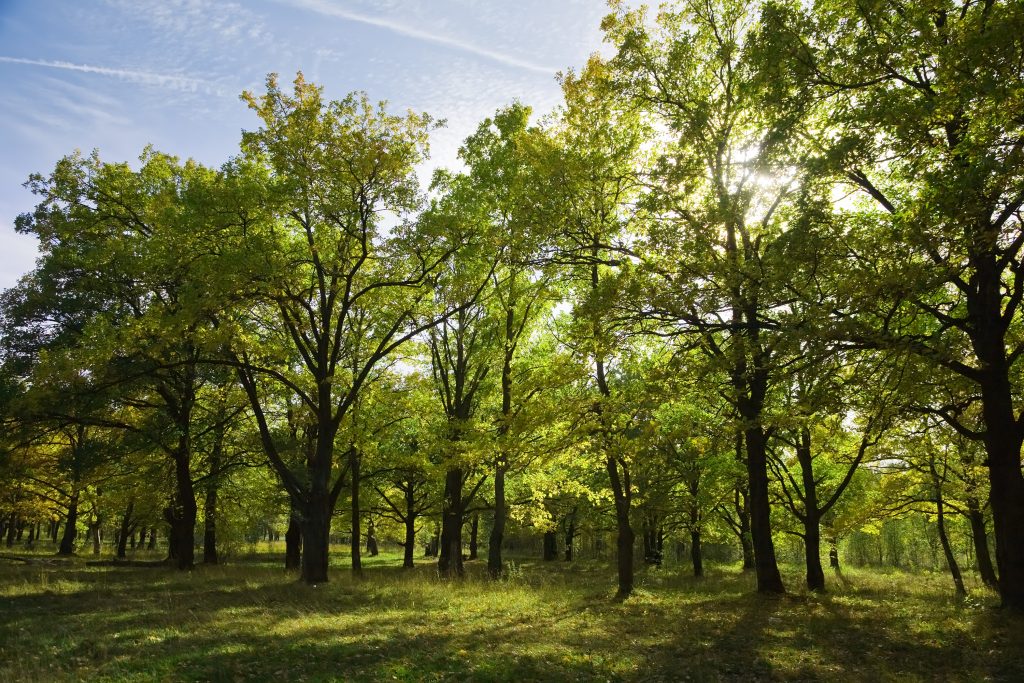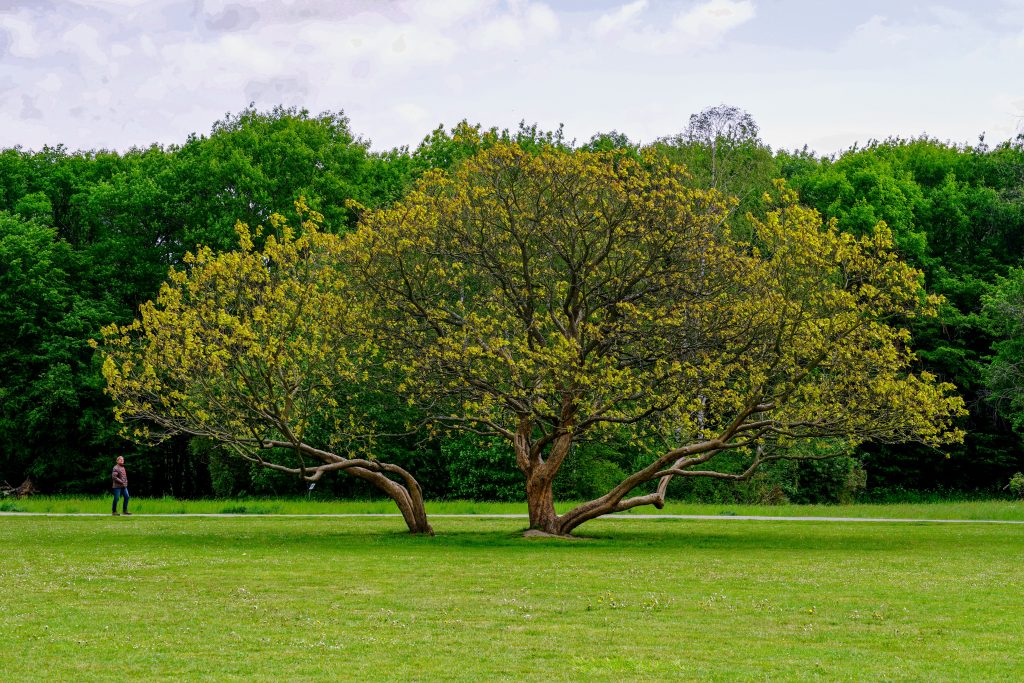Selecting the right tree for your property is a decision that requires careful consideration of various factors to ensure the tree’s health, aesthetics, and compatibility with your landscape. Here’s a step-by-step guide to help you choose the perfect tree for your property:

• Evaluate the available space, including height and width restrictions.
• Determine the amount of sunlight the area receives throughout the day.
• Consider the soil type, drainage, and moisture levels in the planting location.
• Identify the purpose of planting the tree: shade, privacy, aesthetics, wildlife habitat, or a combination.
• Consider whether you want a tree with colorful flowers, attractive foliage, or seasonal changes.
• Determine your USDA hardiness zone and research trees that thrive in your specific climate.
• Choose trees that can tolerate temperature extremes and weather conditions common to your region.
• Determine the mature height and spread of the tree. Ensure it fits within your available space.
• Choose a growth habit (upright, spreading, pyramidal) that complements your landscape design.
• Conduct a soil test to assess pH and nutrient levels. Choose a tree species that suits your soil type.
• Ensure proper drainage to prevent waterlogging, which can harm tree roots.
• Match the tree’s sunlight needs (full sun, partial shade, shade) with the available light on your property.
• Consider nearby structures that might cast shade as the tree grows.
• Research the water requirements of potential tree species. Choose trees that match your property’s water availability.
• Consider drought-tolerant species if you’re in an area with water restrictions.
• Evaluate your ability to provide ongoing care, such as pruning, fertilization, and pest management.
• Choose a tree that aligns with your maintenance capacity.
• Identify common pests and diseases in your area. Opt for tree species resistant to prevalent issues.
• This reduces the need for pesticide use and maintenance.
-Choose trees that provide food and habitat for local birds, insects, and wildlife.
– Trees that support the ecosystem can enhance biodiversity in your area.
– Select a tree that complements your landscape design, considering factors like color, shape, and texture.
– Visualize how the tree will fit into your overall outdoor space.
– Research the average lifespan of the tree species you’re considering.
– Choose a tree that aligns with your long-term goals for the property.
– Ensure the chosen tree species is available at local nurseries. – Check if there are any local regulations or restrictions on tree planting.
– Estimate the costs of purchasing, planting, and maintaining the tree over its lifespan.
– Make choices that fit your budget while considering the tree’s value and benefits.
Choosing the right tree for your property is a significant investment that can enhance your landscape’s beauty and environmental impact. By considering these factors and conducting thorough research, you’ll be better equipped to make an informed decision that aligns with your goals and ensures a harmonious and healthy tree-landscape relationship.
Selecting suitable trees for property aesthetics and health is of paramount importance for several compelling reasons:

A beautiful shot of a growing tree in the middle of the park with trees on the background
• Trees contribute to the visual appeal of your property, adding texture, color, and depth to the landscape.
• Well-chosen trees can create focal points, frame views, and enhance the overall beauty of outdoor spaces.
• Suitable trees blend seamlessly with the surrounding environment, creating a harmonious and balanced landscape design.
• Trees that complement the architecture and other elements on your property contribute to a unified and attractive aesthetic.
• Thoughtfully chosen trees can significantly increase the value of your property.
• Mature trees are often considered desirable by homebuyers, who value the shade, privacy, and beauty they provide.
• Strategically planted trees provide shade, reducing the need for air conditioning during hot months.
• Shade trees can lower energy bills and create comfortable outdoor spaces for relaxation and gatherings.
• Taller trees can serve as natural privacy screens, shielding your property from neighboring views and noise.
• Carefully placed trees can create secluded areas within your property.
• Trees with extensive root systems help prevent soil erosion by anchoring the soil and reducing runoff.
• They improve soil structure and prevent loss of valuable topsoil during heavy rains.
• Suitable trees provide habitat and food sources for birds, insects, and other wildlife.
• Creating a diverse ecosystem on your property promotes biodiversity and contributes to local ecology.
• Trees play a vital role in absorbing carbon dioxide and mitigating the effects of climate change.
• They release oxygen and improve air quality by filtering pollutants and particulates.
• Urban areas tend to be warmer due to the heat island effect. Trees provide shade and cool the surrounding environment, creating a more comfortable living space.
– Trees have been linked to psychological well-being and stress reduction.
– Having a green and lush environment contributes to a sense of tranquility and connection with nature.
– Selecting suitable trees and caring for them ensures long-term benefits. – Trees grow in value over time, enhancing your property’s aesthetics and contributing to a healthier environment.
In summary, choosing the right trees for property aesthetics and health goes beyond mere decoration. It involves considering the long-term impact on your property’s value, your comfort, and the environment. Thoughtful tree selection enhances the visual appeal, sustainability, and overall well-being of your property and the community.
Choosing the right trees for your property involves considering a variety of factors to ensure that the trees thrive, contribute positively to your landscape, and meet your specific goals. Here are the key factors to consider when selecting trees:
• Choose trees that are well-suited to your local climate, including temperature ranges, frost dates, and precipitation patterns.
• Research your USDA hardiness zone to determine which tree species are likely to thrive in your area.
• Evaluate the conditions of your planting site, including sunlight exposure, soil type, drainage, and available space.
• Consider whether the location receives full sun, partial shade, or full shade throughout the day.
• Determine the main reason for planting the tree. Is it for shade, privacy, ornamental value, windbreak, fruit production, wildlife habitat, or erosion control?
• Research the mature size (height and spread) of the tree. Ensure it fits within your available space and won’t interfere with structures or utilities.
• Consider the growth rate of the tree. Some trees grow quickly, while others take years to reach maturity.
• Conduct a soil test to understand the soil’s pH, nutrient levels, and drainage capabilities.
• Choose tree species that are adapted to your soil type. For instance, clay-loving trees may struggle in sandy soil.
• Determine the water needs of the tree species. Some trees are drought-tolerant, while others require consistent moisture.
• Match the tree’s water needs with your property’s water availability and irrigation capabilities.
• Consider the amount of care the tree will require over its lifetime. Some trees demand regular pruning, fertilization, and pest management.
• Choose a tree that aligns with your willingness and ability to provide ongoing maintenance.
• Research common pests and diseases that affect trees in your area.
• Opt for tree species that have good resistance to prevalent pests and diseases.
• If you want to attract birds and other wildlife, choose trees that provide food sources (fruits, nuts, seeds) and habitat (nesting sites, shelter).
– Consider the tree’s appearance, including its foliage color, shape, texture, and seasonal changes.
– Ensure the tree’s aesthetics complement your landscape design and overall property style.
– Research the average lifespan of the tree species you’re considering. Some trees live for decades, while others have shorter lifespans.
– Check if there are any local regulations, zoning ordinances, or homeowner association guidelines that impact tree planting on your property.
– Ensure that the chosen tree species is available from local nurseries or suppliers.
– Verify the tree’s health and quality before purchasing.
– Factor in the costs of purchasing, planting, and maintaining the tree over its lifetime.
By carefully considering these factors, you can make an informed decision that results in healthy, attractive trees that thrive in your landscape for years to come.
[geocentric_weather id=”45ff4ccd-3d3f-498e-b0b9-91aaaf766bc4″]
[geocentric_about id=”45ff4ccd-3d3f-498e-b0b9-91aaaf766bc4″]
[geocentric_neighborhoods id=”45ff4ccd-3d3f-498e-b0b9-91aaaf766bc4″]
[geocentric_thingstodo id=”45ff4ccd-3d3f-498e-b0b9-91aaaf766bc4″]
[geocentric_busstops id=”45ff4ccd-3d3f-498e-b0b9-91aaaf766bc4″]
[geocentric_mapembed id=”45ff4ccd-3d3f-498e-b0b9-91aaaf766bc4″]
[geocentric_drivingdirections id=”45ff4ccd-3d3f-498e-b0b9-91aaaf766bc4″]
[geocentric_reviews id=”45ff4ccd-3d3f-498e-b0b9-91aaaf766bc4″]